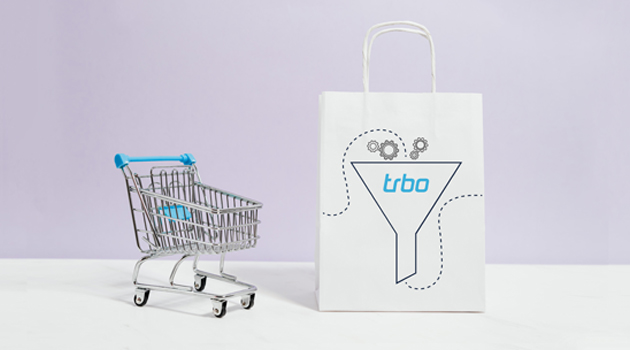We have come up with something new for you this year! We are starting a new blog series featuring our various trbo features, taking a closer look at them. This gives you the opportunity to learn more about our existing features, but also about our new ones.
Our first topic is the “funnel reporting”. You always wanted to know what a funnel reporting is all about and how it works? Well, then today’s blog post is perfect for you!
What is a funnel?
Everyone who deals with marketing will certainly have heard the word funnel before. At trbo, we refer to the various stages that a user undergoes during the buying process on a website as “funnel steps”. The name ” funnel ” refers to the fact that at every stage, users leave the website or take a different path. Thus, in this example, the narrow opening of the funnel shows the significantly smaller number of users who have actually made a purchase at the end of the customer journey.
A funnel could look like this:

What is the purpose of a funnel reporting?
If you launch campaigns and actions on your website – for example with trbo – you usually want to know how and when they influence the user behavior. The funnel reporting helps you find out exactly that. It allows you to see precisely at which point in the customer journey the campaign influences the user behavior. Depending on the primary KPI used for the test – for example, visiting the shopping cart – it is possible to check if and how the campaign affects other stages of the funnel and whether the effect can be traced back significantly to this campaign.
Funnel reporting – How does it work?
In general, the funnel reporting can be applied to any campaign, whether it is an A/B- or multivariate test, a standard campaign or more complex measures. You can activate it quite easily with just one click. Upon that, the individual funnel steps and the conversion target have to be defined. For more complex projects, we also offer manual solutions that enable individual evaluation.
Once the reporting has been set up, statistics can be used to determine how many people came into contact with the campaign and by what percentage a downlift or uplift of the respective campaign goal has been achieved. For example, if you want to increase the number of users in the shopping cart, this allows you to figure out exactly how the specific measure had an impact on this.
In the evaluation, you can flexibly set up filters such as device or date, as well as the structure of the reporting – for example, via users or sessions.
The following example examines the effect of direct shopping cart access via the category page. Instead of being redirected to the product details page, the test group was shown the product details directly on the category page. All links led the users directly to the shopping cart. This example shows: The direct link to the shopping cart led to a significant uplift in all further funnel steps.

Funnel reporting – Am I able to do this too?
Anyone who runs a webshop and would like to know how certain campaigns influence users can use trbo’s funnel reporting within our onsite personalization platform.
We are happy to show you how you can optimize and personalize the onsite experience for your customers and use funnel reporting for the evaluation in a personalized demo.
